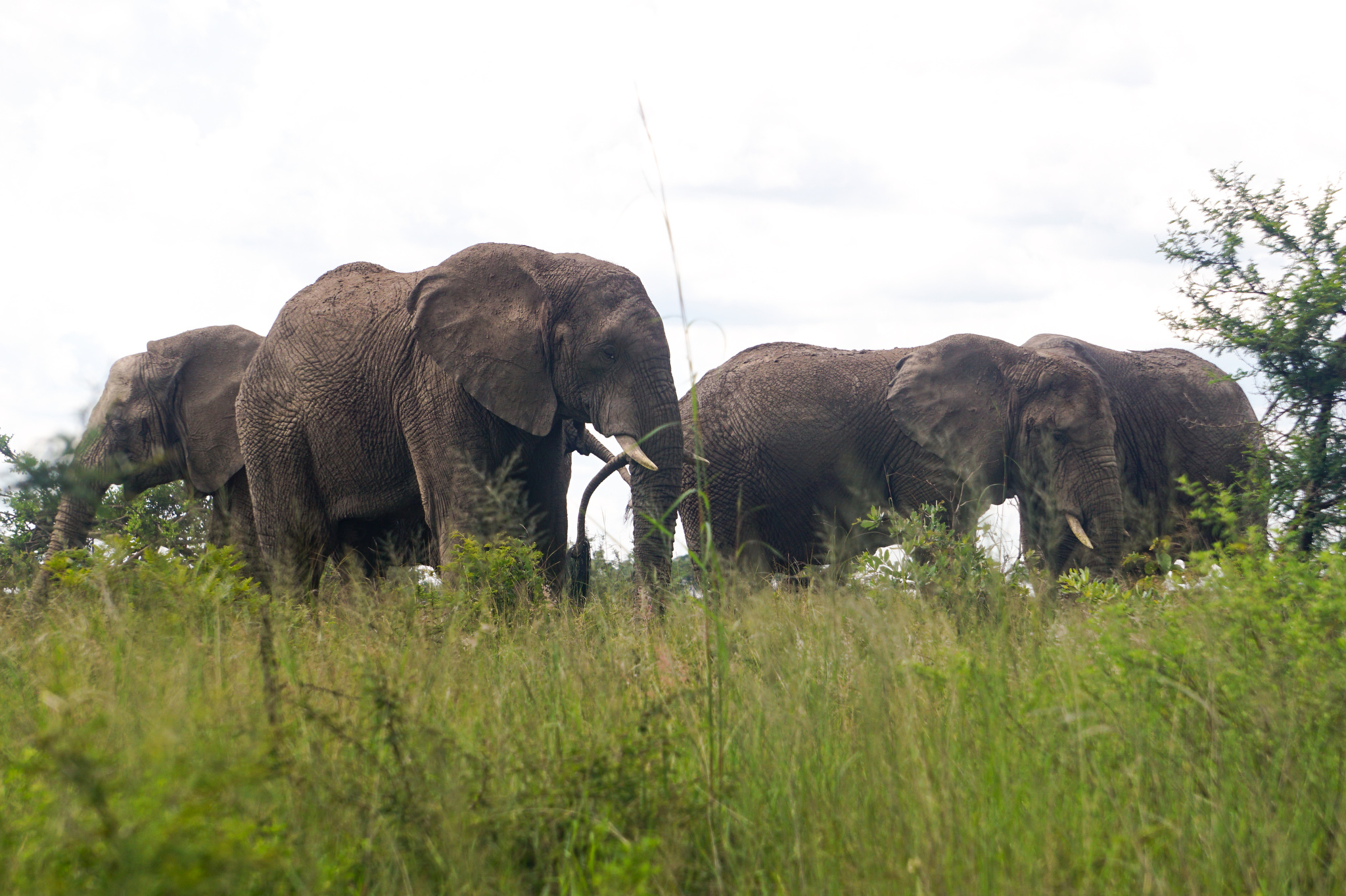
Vimbai Chinembiri, GPJ Zimbabwe
Some 45,000 elephants live in Zimbabwe's Hwange National Park, a government-protected area. Activists say elephants, agitated by mining activity, killed at least 25 people last year.
HARARE, ZIMBABWE — In early 2020, communities around Hwange National Park, in southwest Zimbabwe, feared the worst.
On the fringes of the park, not far from the popular Sinamatela wildlife resort, miners explored whether the area held enough coal to mine.
This part of Sinamatela, which the government labels as an Intensive Protection Zone, is home to about 45,800 elephants. Black rhino, which are critically endangered, also live there.
But in September, the Zimbabwean government ordered a stop to mining in protected areas. Conservationists breathed a sigh of relief. Not for long. Environmental activists fear the new policy – which doesn’t carry the weight of law – has failed to shield tens of thousands of animals and sacred sites in protected areas, kindling conflict between humans and wildlife that has killed scores of people since last year.
Mining in protected areas is “increasingly becoming a usual occurrence, from both large scale and artisanal miners within protected areas,” according to a report published by the Zimbabwe Environmental Law Association, an organization that focuses on research and policy.
In other parts of the world, such as the American West, mining-related lung infections have afflicted some animals. Electric cables have killed birds. Fish have died because of rerouted streams.
Protected areas in Zimbabwe are rich in gold and coal deposits, “so people have been moving in for economic gain,” says Nqobizitha Ndlovu, the national legal and policy adviser at the environmental law association.
In Zimbabwe, 64 protected areas include national parks, botanical reserves, sanctuaries, safaris and recreational parks, covering nearly 13% of the country’s land.
Early last year, locals spotted miners drilling in Hwange National Park. Initially, they weren’t concerned, as they were used to seeing miners in the area. But they grew alarmed when, a few months later, the miners’ company produced a permit to explore for coal.
Park officials, safari owners, ordinary residents and community leaders led distress calls online, via the media and through community meetings challenging how the miners had won their permits.
Mining in protected areas can occur only with consent from the Ministry of Environment, Climate, Tourism and Hospitality, the Ministry of Mines and Mining Development, and Zimbabwe’s president, according to the Parks and Wildlife Act. Activist Fidelis Chima, coordinator of the Greater Whange Residents Trust, together with the law association, took the government to court in September, arguing that officials hadn’t received such consent. And two days later, the government halted mining in protected areas.
But the new policy isn’t a law.
“In terms of the laws of the country, policies are generally not binding, so if the government issues a policy and [envisions] that that policy should be binding, it should then change that policy into a legislation,” Ndlovu says.
Absent a law, mining persists in protected areas, Ndlovu says. These areas include Chimanimani, which covers 171 square kilometers (66 square miles) and is famous for its elegant mountains and Eland Sanctuary. It also hosts, among other wildlife: zebra; klipspringer, a small antelope known for its rock-climbing ability; bushbuck; hyena; and leopard.
“The area is basically occupied with illegal [freelance] miners,” Ndlovu says.
Mining left a trail of destruction, including deforestation and open pits, which affected the fauna and flora that attract people to these parks, says Collen Sibanda, a tour guide in Chimanimani. Miners disturbed tributaries and dug inside sacred caves, he says. They removed cave stones in search of gold.
Tinashe Farawo, spokesperson for the Zimbabwe Parks and Wildlife Management Authority, denies those claims.
“We have been trying to protect the park from our end to avoid illegal mining problems,” he says. “We don’t have such reports. We have asked people to bring evidence of such activities, but no one is forthcoming.”
Mining risks heightening conflict between humans and wildlife, as evidenced by a local company’s impact on a protected safari area 10 kilometers (6 miles) outside Hwange town, says a conservationist who requested anonymity for fear of retribution.
“The animal habitat has been affected terribly because they tend to move toward human habitat because of the noise from mining and contaminated water,” says the conservationist.
In January, a mining dump truck knocked down two elephants, he says.
And elephants, crocodiles and buffalo killed 50 people nationwide in the first half of last year due to mining activities and human-wildlife conflict, according to a report by the Centre for Natural Resource Governance, a Zimbabwe-based research and advocacy organization.
Onesimo Moyo, permanent secretary in the Ministry of Mines and Mining Development, says the agency plans to cancel all mining titles held in protected areas.
But that doesn’t put everyone at ease. Government officials must better acquaint themselves with the sites to which they give special grants, says Chief Charles Nekatambe, of Sinamatela.
“No one should mess with [our sacred places], or anger our ancestors,” he says. “There are cultural processes that are done before mining occurs. This should be respected.”
Gamuchirai Masiyiwa is a Global Press Journal reporter based in Harare, Zimbabwe. She is an internationally acclaimed economy and education reporter.
Vimbai Chinembiri is a Global Press Journal reporter based in Zvishavane, Zimbabwe. She specializes in reporting on Zimbabwe’s extractive industries.
TRANSLATION NOTE
Gamuchirai Masiyiwa, GPJ, and Vimbai Chinembiri, GPJ, translated some interviews from Shona and Ndebele.








